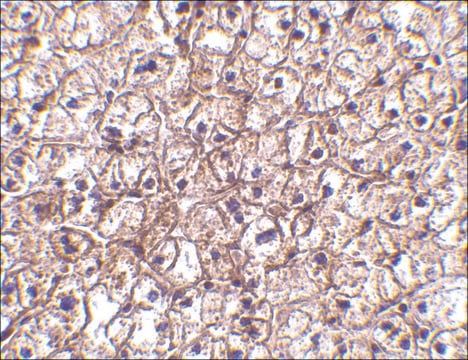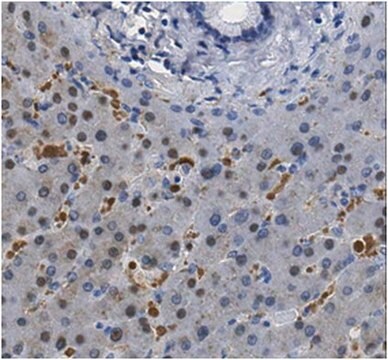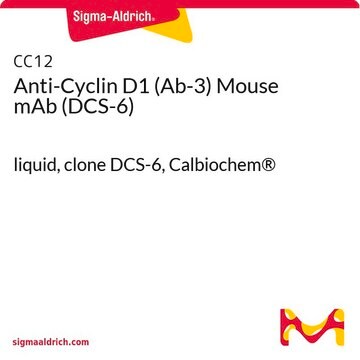MABF938
Anti-MxA, clone M143 (CL143)
clone CL143, from mouse
Sinónimos:
MxA, IFI-78K, Interferon-induced GTP-binding protein Mx1, Interferon-induced protein p78, Myxoma resistance protein 1, Myxovirus resistance 1, MX1
About This Item
Productos recomendados
origen biológico
mouse
Nivel de calidad
forma del anticuerpo
purified immunoglobulin
tipo de anticuerpo
primary antibodies
clon
CL143, monoclonal
reactividad de especies
guinea pig, human, mouse, rat
técnicas
flow cytometry: suitable
immunohistochemistry: suitable (paraffin)
western blot: suitable
isotipo
IgGκ
Nº de acceso NCBI
Nº de acceso UniProt
Condiciones de envío
wet ice
modificación del objetivo postraduccional
unmodified
Información sobre el gen
human ... MX1 (4599)
Categorías relacionadas
Descripción general
Especificidad
Inmunógeno
Aplicación
Immunohistochemistry Analysis: Representative lots detected MxA immunoreactivity in patients-derived skin lesion samples using paraffin-embedded tissue sections (Urosevic, M., et al. (2007). J. Clin. Invest. 117(10): 2834–2846; Urosevic, M., et al. (2005). J. Natl. Cancer Inst. 97(15):1143-1153).
Flow Cytometry Analysis: A representative lot detected MxA expression in MxA-transfected U-87-H4 and U-87-D11, but not untransfected U-87-K4 human gliobastoma cells (Schneider-Schaulies, S., et al. (1994). J. Virol. 68(11):6910-6917).
Western Blotting Analysis: A representative lot detected a robust MxA induction in the lung tissue from guinea pigs that recieved intranasal administration of recombinant human alpha-IFN (Van Hoeven, N., et al. (2009). J. Virol. 83(7): 2851–2861).
Western Blotting Analysis: A representative lot detected a time-dependent MxA induction in the lung tissue from rats following intraperitoneal Seoul virus inoculation (Hannah, M.F., et al. (2008). Brain Behav Immun. 22(4):503-516).
Immunoprecipitation Analysis: A representative lot immunoprecipitated MxA from murine MxA-expressing Swiss 3T3 cells (clone 4.5.15) (Flohr, F., et al. (1999). FEBS Lett. 463(1-2):24-28).
Inflammation & Immunology
Immunoglobulins & Immunology
Calidad
Western Blotting Analysis: 0.5 µg/mL of this antibody detected MxA in 10 µg of Swiss 3T3 (clone 4.5.15) cell lysate.
Descripción de destino
Forma física
Almacenamiento y estabilidad
Otras notas
Cláusula de descargo de responsabilidad
Not finding the right product?
Try our Herramienta de selección de productos.
Código de clase de almacenamiento
12 - Non Combustible Liquids
Clase de riesgo para el agua (WGK)
WGK 1
Punto de inflamabilidad (°F)
Not applicable
Punto de inflamabilidad (°C)
Not applicable
Certificados de análisis (COA)
Busque Certificados de análisis (COA) introduciendo el número de lote del producto. Los números de lote se encuentran en la etiqueta del producto después de las palabras «Lot» o «Batch»
¿Ya tiene este producto?
Encuentre la documentación para los productos que ha comprado recientemente en la Biblioteca de documentos.
Nuestro equipo de científicos tiene experiencia en todas las áreas de investigación: Ciencias de la vida, Ciencia de los materiales, Síntesis química, Cromatografía, Analítica y muchas otras.
Póngase en contacto con el Servicio técnico







